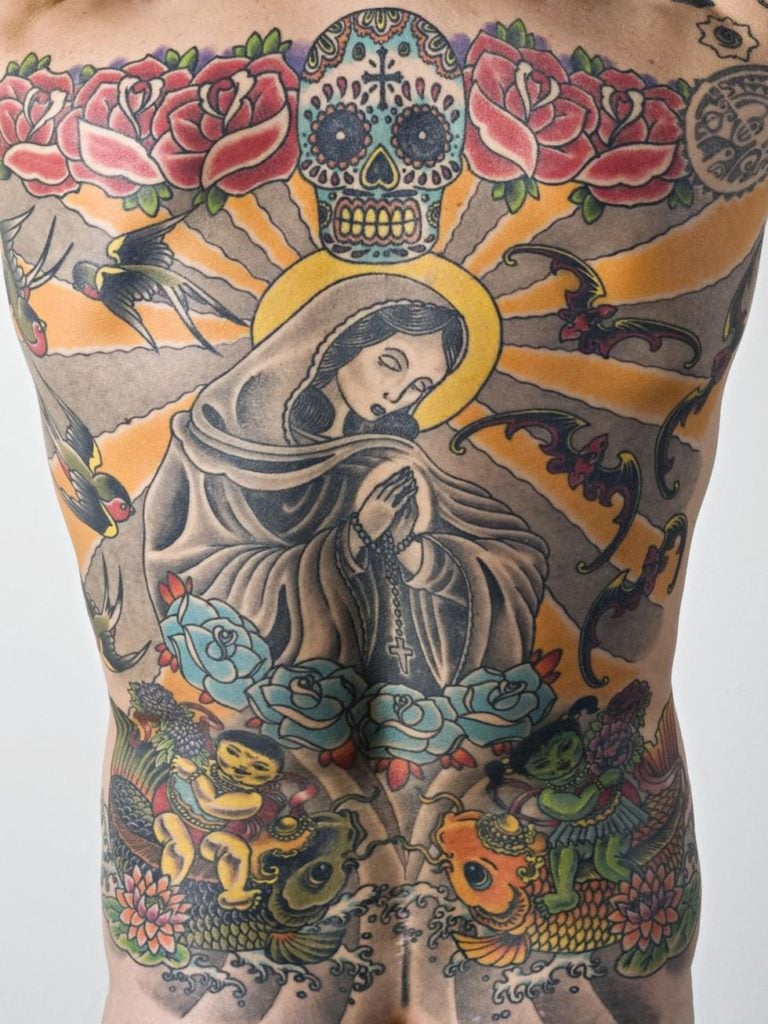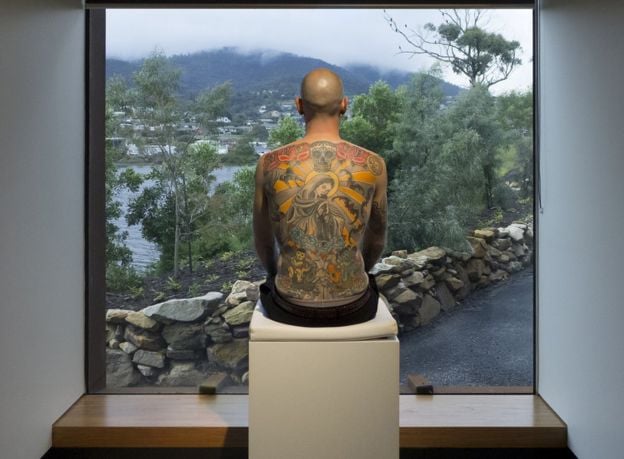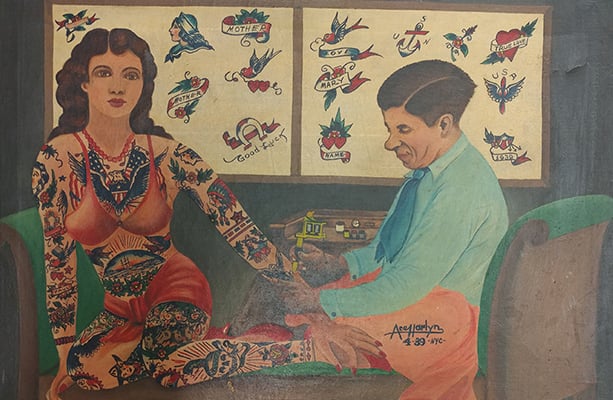Art & Exhibitions
Art Collector to Preserve and Frame Tattoo by Wim Delvoye After Man Dies
A man has agreed to be skinned for the project.

A man has agreed to be skinned for the project.

Sarah Cascone

Back tattoos can be elaborate affairs, but they’re unlikely to catch the eye of art collectors—unless, of course, they’re the work of Belgian artist Wim Delvoye, who, in addition to his controversially inked pigs, also tattooed the back of a man named Tim Steiner.
The tattoo took Delvoye 40 hours to complete, over the span of two years. The elaborate design features a praying Virgin Mary with a rosary amid beams of light; she is surrounded by soaring birds, and red and blue roses. Above her is an assortment of Day of the Dead-style skulls, while two children riding koi fish complete the bottom of the image.
According to the Independent, German art collector Rik Reinking admired Steiner’s ink so much that he bought the tattoo. The 2008 deal saw Steiner get a third of the purchase price, in exchange for participating in art exhibitions.

Tim Steiner exhibiting his Wim Delvoye tattoo in Hobart, Tasmania, at the Museum of Old and New Art in 2012. Courtesy of Wim Delvoye.
That means, of course, that he spends much of his days sitting around art galleries with his shirt off. Most recently, in honor of the 10th anniversary of the tattoo’s completion, Steiner spent five hours a day, six days a week showcasing his body art at the reliably-strange Museum of Old and New Art in Hobart, Tasmania—1,500 hours in total. Previously, he’s done stints at the Louvre in Paris and the Weserburg Museum in Bremen.
Even creepier, Steiner has agreed that upon his death, he will be skinned and his back art stretched, preserved, and framed for Reinking’s art collection. While that may sound gruesome, “it’s an old concept—in Japanese tattoo history it’s been done many, many times,” Steiner told the BBC. “If it’s framed nicely and looks good, I think it’s not such a bad idea.”

Ace Harlyn, Charlie Wagner tattooing Millie Hul (1939). Collection of Brad Fink, Daredevil Tattoo NYC. Courtesy of the New-York Historical Society.
“My back is the canvas, I am the temporary frame,” Steiner added, noting that tattooing is worthy of greater respect as an art form. “Tattooers are incredible artists who’ve never really been accepted in the contemporary art world.”
Meanwhile, tattooing and its history as an art is currently being reevaluated by the New-York Historical Society in “Tattooed New York” (through April 30), which traces the history of the medium in the city from 18th-century Native Americans and tattooed sideshow “freaks” to the city’s tattoo ban of 1961–97 and beyond.